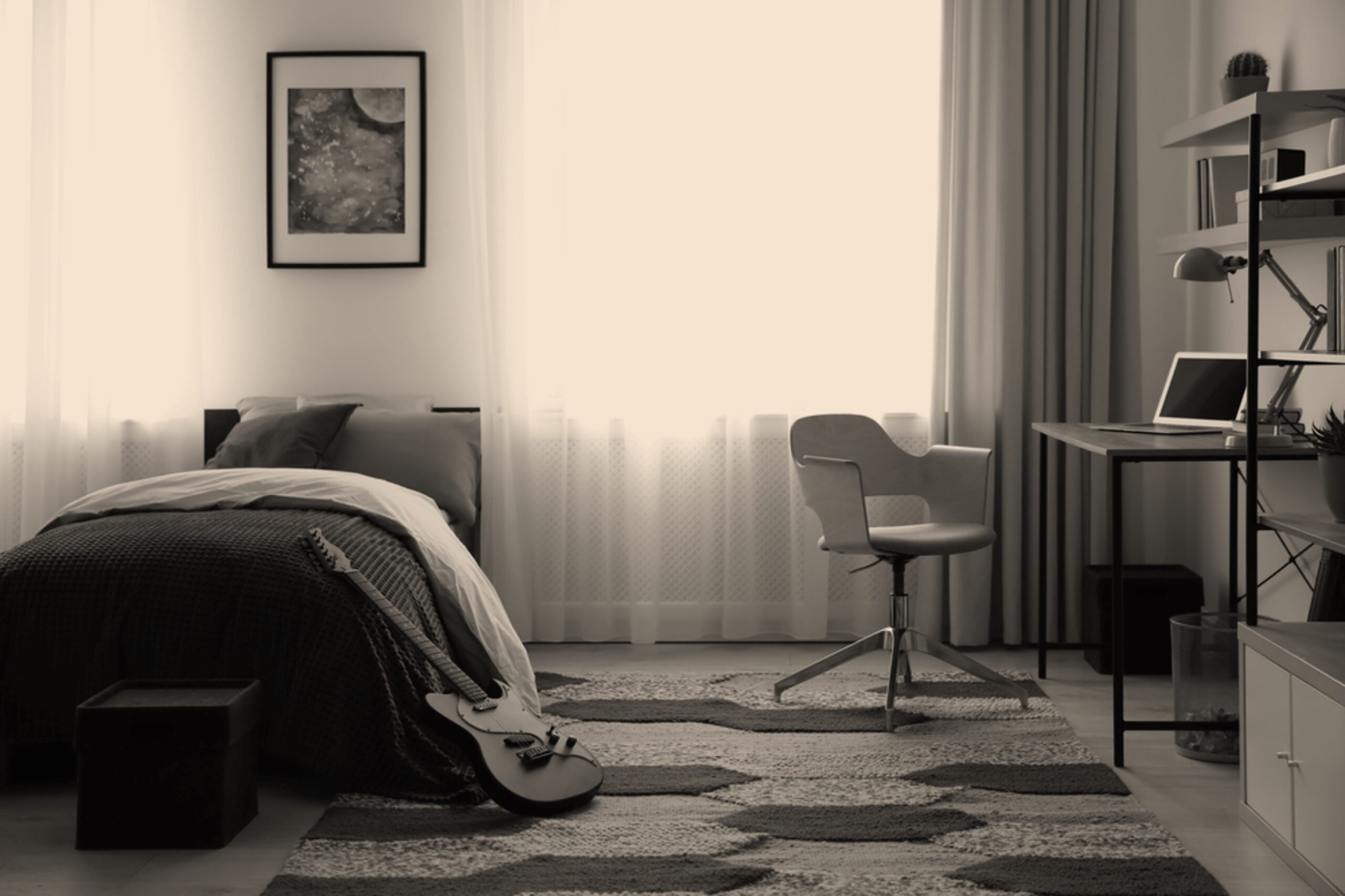
Want to make a radio professional uncomfortable?
Bring up Gen Z.
There’s no pat answer to the dilemma facing radio broadcasters on the brink of losing one of America’s next biggest generations. Other topics kindle mostly healthy debate: AM in cars, streaming vs. broadcast, to podcast or not to podcast, sales vs. programming, the future of Nielsen ratings, what effect will AI have on radio.
But when it comes to today’s teens, no one has answers – at least not very useful or effective ones. Most just throw up their hands and shake their heads.
Paul and I recently conducted virtual focus groups among a public radio station’s underwriters and sponsors – in other words, their advertisers. These clients truly appreciate how sponsoring public radio programming creates a halo effect for sponsors. While many are gravitating to digital platforms for branding and foot traffic, they acknowledge the power of a smart non-commercial broadcast radio station in their small Midwest market and the strong association it can create for their products and services.
The conversation sailed along nicely, until the “Anything else?” phase. This is where Paul (who moderated this group) asked if respondents had anything additional they wanted to add to the conversation. And that’s when an advertiser who owns a mattress store in town asked this question about the public radio station at the center of the discussion:
“What’s your Gen Z strategy?”
Now, this was not a young store owner talking, but a Gen X businessman with a legitimate concern: how is he/his business going to reach and connect with the next generation of mattress buyers? Will they all go online and buy their next (or first) mattress from Internet brands like Leesa, Saatva, Casper, Purple, Cocoon, Nola, and the list goes on and on….
buyers? Will they all go online and buy their next (or first) mattress from Internet brands like Leesa, Saatva, Casper, Purple, Cocoon, Nola, and the list goes on and on….
How can this retailer get young adults in his community to walk in to his brick & mortar store to try out his mattresses when they already buy so much of their goods and services online? And which medium or marketing channels can he count on to reach them?
Fortunately, we were out of time, and the group ended. Others in our Zoom room agreed a strategy for pubic radio to talk connect with this influential generation is a necessity for the medium’s sustainability.
But that’s where it often ends – with everyone wringing their hands.
Of course, there’s a lot of rationalization going on. And many conclusions, mostly without any data to back it up.
Common excuses:
“Even if there was decent content, Gen Z is all about their phones – not radio.”
“Gen Z thinks radio stations are lame.”
“Gen Z’s don’t even know what a radio IS.”
Do we know these things to be true? Or are these mostly the product of a conventional “wisdom” (yes, in quotes because we don’t have any earthly idea whether it’s true) that points to radio being mostly for a 50+ audience in the process of aging out?
Take video games, a pastime that has always had high youth appeal. Consider “Grand Theft Auto.” Since it was first released, it’s the most successful franchise originating from the U.K. It has sold 405 million copies, and “Grand Theft Auto V” is the second best-selling game in history (185 million shipped).
“Grand Theft Auto.” Since it was first released, it’s the most successful franchise originating from the U.K. It has sold 405 million copies, and “Grand Theft Auto V” is the second best-selling game in history (185 million shipped).
“GTA’s” strongest age appeal? 14-25 year-olds
And a key feature of the game, going all the way back to the beginning?
“GTA’s” radio stations.
A couple weeks ago, an online game site, Game Rant, rated “the best radio stations in GTA 5.” Here are the highlights of the story:
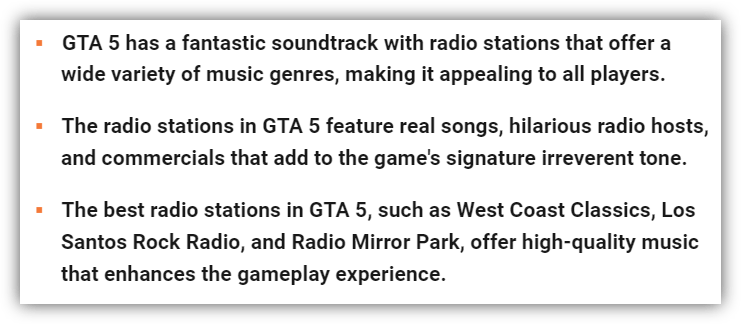
It’s a familiar descriptor you’d give to broadcast radio PDs who would give it to the salespeople to summarize what their station is all about.
And I don’t know about you, but I get the sense GTA players know a good radio station when they hear one. The ones in the game feature all the traditional trappings you’d expect from a well-programmed broadcast radio station. Rather than over the air, they’re embedded in the game.
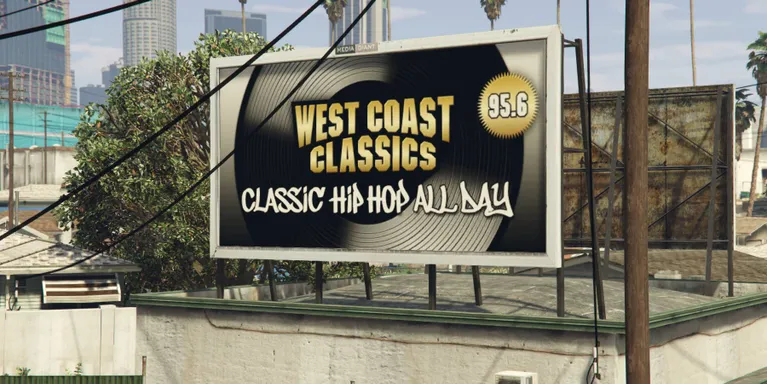
The radio station in GTA V are under the “West Coast Classics” banner. Check out Game Rant’s mini-revue of one of the game’s radio stations:
“Players looking to get hyped to take on Grand Theft Auto 5‘s best missions may want to try Los Santos Rock Radio. This station is made up of classic rock songs that are likely nostalgic to many players. While the station was solid to begin with, the update that came with the Xbox One and PS5 ports was extremely kind to it. Additions like ‘Danger Zone.’ ‘Carry On Wayward Son,’ and ‘Roundabout’ gave it possibly the biggest upgrade of any station in the game. Los Santos Rock Radio is the perfect radio station to play before or during a big action scene.”
Seriously – is there any wonder why the Classic Rock format on broadcast radio has a larger audience under 40 than you’d logically think, considering when these songs were released?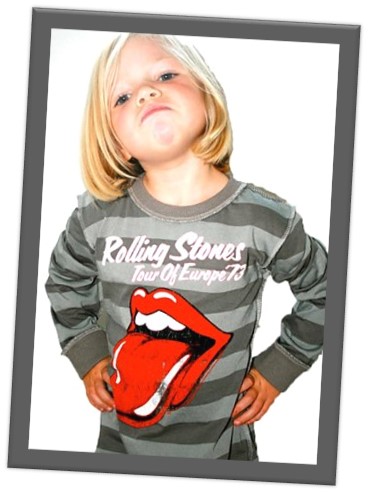
But since the advent of the iPod, a song’s chronology means less and less to music lovers. They constantly time-shift when listening to music, era and genre-hopping from Neil Diamond to Drake. It matters less when a song came out – it’s whether they like it.
Maybe the problem is that radio – as we know it and we’re presenting it on the air – doesn’t check off all the boxes mentioned in Game Rant’s reviews of GTA V’s radio formats. The expectations from these radio stations are all traditional content offerings that have been a part of the medium for decades and decades: music that fits a mood, DJs who add to the presentation, commercial content, and an attitude or point of view geared to the demographic being targeted.
Isn’t this Radio Programming 101?
Just imagine if we actually researched Gen Z to discover precisely what kind of radio they might listen to – while on their way to school, while studying, working, hanging out, or alone in their rooms with just their thoughts and a radio playing in the background.
We know nothing about them. Yes, it’s true that if you have a Gen Z or two inhabiting a bedroom in your home, you get the chance to observe them and their media habits. And while broadcast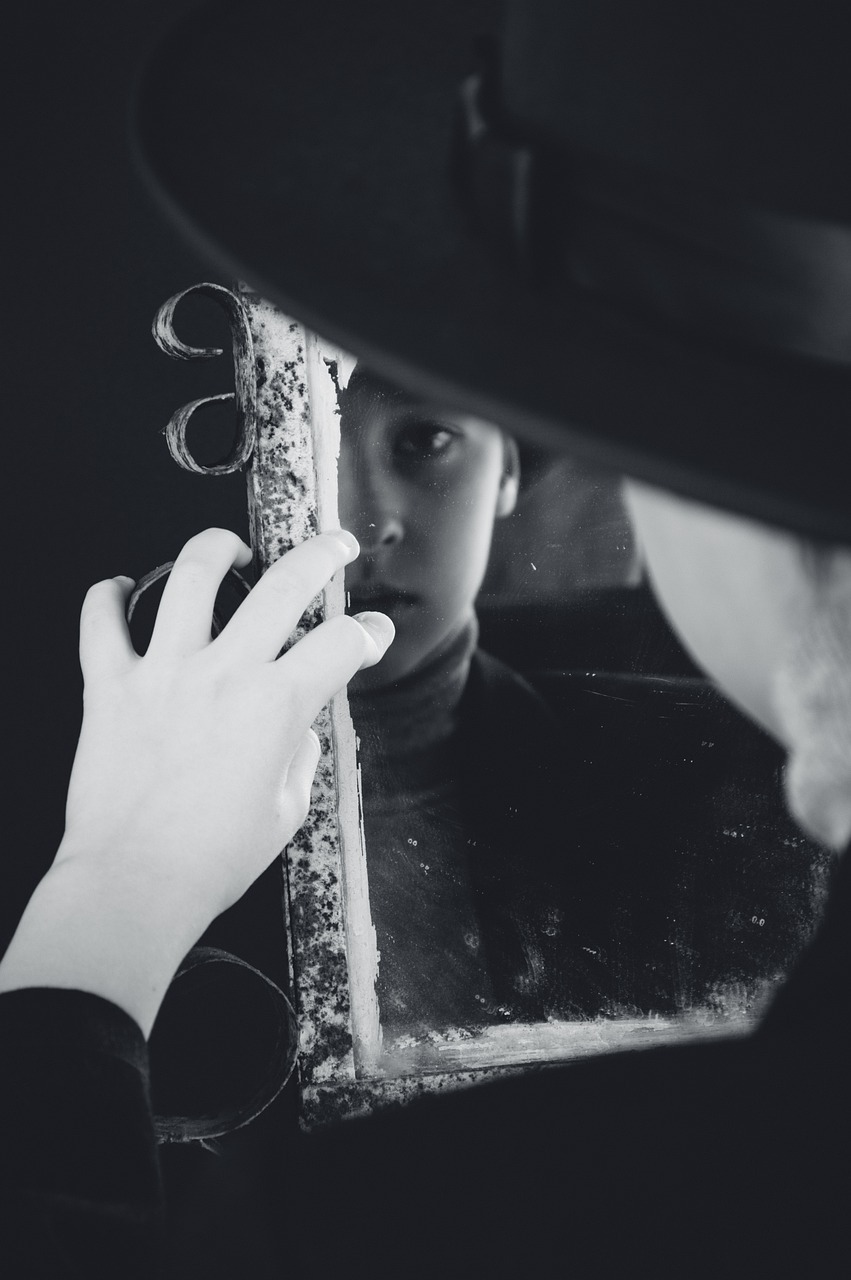 radio may not even be on their menu of choices, is there any reason that if the right content was fine-tuned for them, they wouldn’t at least include it in their array of choices?
radio may not even be on their menu of choices, is there any reason that if the right content was fine-tuned for them, they wouldn’t at least include it in their array of choices?
Fact is, it’s not easy being a teenager right now. A recent story in Insider suggest teens are experiencing roadblocks in meeting people and making friends. Here’s the headline:
“Gen Z loneliness is so bad that some young adults are spending thousands trying to make friends through gym memberships and social clubs”
According to a December 2022 survey conducted by the Harvard Graduate School of Education, more than one-third of 18-25 year-olds in the U.S. say they feel lonely frequently, almost all the time, or all the time – higher than any other demographic group.
From the Great Recession to COVID to today’s tumultuous state of the country and the world, should we be the last bit surprised their loneliness is off the charts.
The challenges of growing up in this environment with its pressures and steep culture shifts are stressful. And throughout the day, they may be confronted with high-pressure stress from friends, parents, teachers, employers, and others in their lives.
Perhaps that’s why their haven may be their rooms – at night – when there’s no one else around – a time to be alone with their thoughts.
With the radio on?
Do my dreaming and my scheming
Lie awake and pray?
Do my crying and my sighing
Laugh at yesterday?
Now it’s dark and I’m alone
But I won’t be afraid
In my room
The song whose lyrics are interspersed in this blog is more than 50 years-old. Released in 1966, “In My Room” turned out to be an atypical Beach Boys hit – a slow dance, introspective song that differed from the group’s more typical upbeat, fun, sun, surf, cars, and girls-powered anthems.
Written by Brian Wilson and Gary Usher, “In My Room” resonated strongly with teens of the era. (I was one of them.) And it makes you wonder whether the life of a teen isn’t a whole lot different today. The gadgetry and the soundtrack have changed, but the angst, the fears, and the insecurities are universal. If anyone understood all that teenage confusion, Brian Wilson most certainly did.
Many of us cooped up in our rooms at night, along with our homework, books, games, or our records often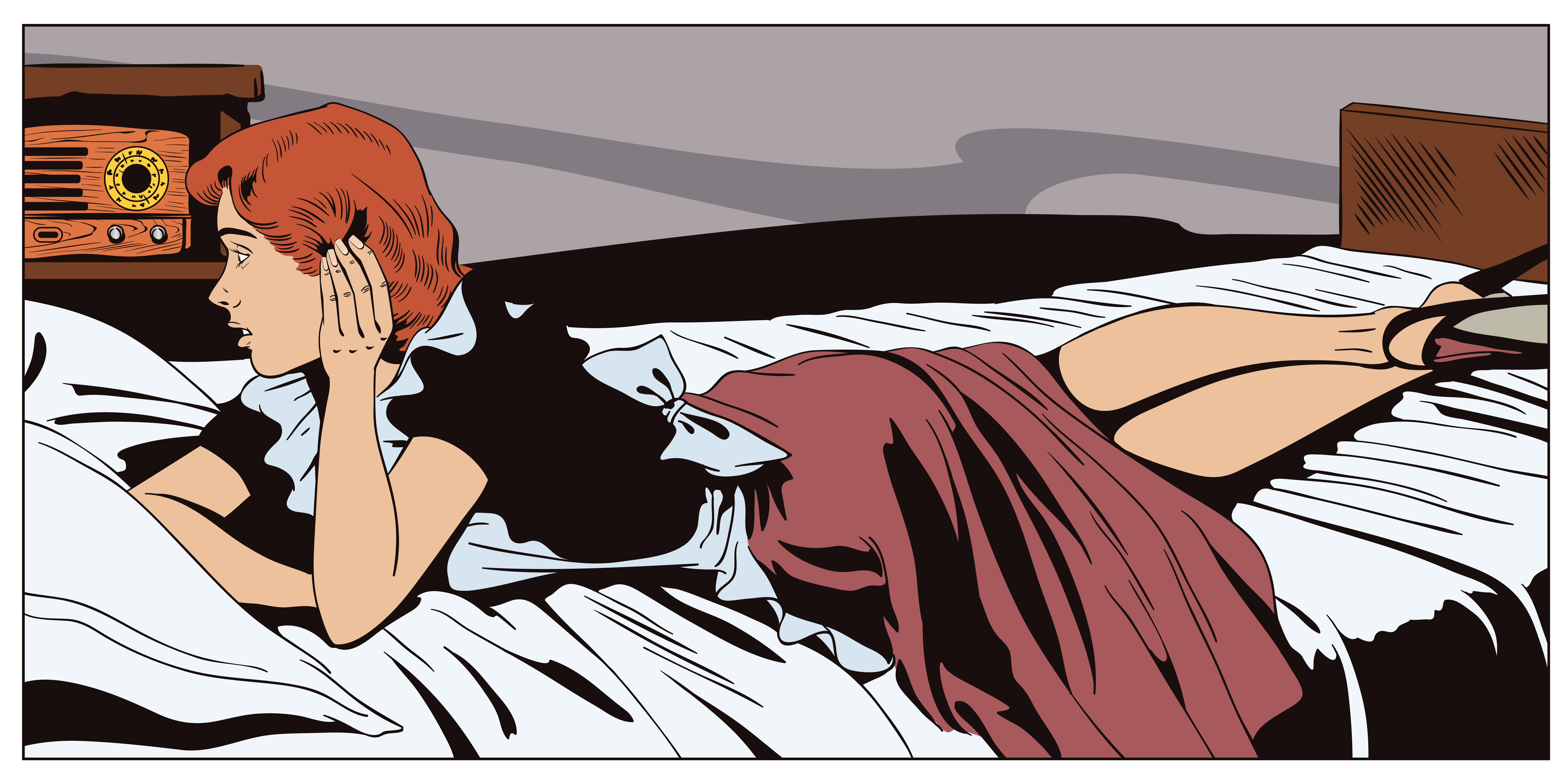 listened to the radio at night. On Top 40 and even rock stations, the ratings often didn’t kick in until the 3pm hour or so – when the kids got out of school.
listened to the radio at night. On Top 40 and even rock stations, the ratings often didn’t kick in until the 3pm hour or so – when the kids got out of school.
And nighttime radio, was a unique environment where DJs actually had the chance to closely connect with their young listeners – on the phones and over the air. At the best stations with the strongest personalities, the night numbers were often huge.
When radio stations shifted their demographic focus to 25-54 year-olds, they discovered adult listeners were more likely to be sitting around the TV at night – not listening to radio. Thus, why bother with night shows, personalities, and DJs after dark?
And so a self-fulfilling prophecy of sorts for radio programming was cemented in place. The absence of live talent (or any talent) during the night hours coincided with the abandonment of radio by teens in this once fertile daypart.
A voicetracked jock isn’t going to change that. And don’t look to AI to rescue radio at night. Firing off weather, promos, and things to do this weekend from a bot cannot replace a genuine human, emotional connection between an air talent and listeners looking to escape, to be inspired, comforted, or just to laugh.
There is an intimacy to radio no other medium has. We often think about it in cars, especially when it’s just a driver and a radio DJ or host. But in the rooms of teens – Gen Z’s, to be specific – the potential exists to spawn a relationship between a young consumer looking for something different and a beleaguered industry trying desperately to do something, anything the least bit innovative and attention-getting.
You know the definition of insanity. It’s etched on our psyches. The same music, the same target audience, the same research, the same clocks, and the same formats will yield the same results: predictable, forgettable radio that cannot possibly connect in the entertainment environment we find ourselves in.
So that raises what has become an inconveniently existential question for radio:
If we build it, would they find it? And listen to it?
I don’t honestly know, but more importantly, neither does anyone else. We truly have no clue if Gen Z would become aware of it, socialize about it, and even listen to it. Or maybe this Gen Z focused content is not disseminated over the broadcast airwaves, but instead available on a stream or on Twitch or TikTok.
focused content is not disseminated over the broadcast airwaves, but instead available on a stream or on Twitch or TikTok.
I can hear CFO’s asking, “But could we monetize it?”
And to that, I’ll add another “I don’t know.” There have been lots of things created by inventive programmers over the decades that have gone virtually or totally unsold. For most radio sales teams, the more unique content is, the harder it apparently is for them to sell.
I do know this – when we let the sales department dictate content, you can grab a fork.
We’re done.
- What To Do If Your Radio Station Goes Through A Midlife Crisis - April 25, 2025
- A 2020 Lesson?It Could All Be Gone In A Flash - April 24, 2025
- How AI Can Give Radio Personalities More…PERSONALITY - April 23, 2025




I’ve never played GTA, so I have a question about their radio stations.
Do they have 6, 7 and sometimes 8 minute stopsets like real radio stations do?
I’ll hang up and listen to your answer on the air.
We’ll be back with the answer after we pay some bills, Carter.
Truth- “I do know this – when we let the sales department dictate content, you can grab a fork. We’re done”
And you do know what comes to mind? WWDHS. What Would Dave Hamilton Say? And those of us who worked with him know EXACTLY what he would say.
Hey, Bill. John wouldn’t let us salespeople say a word about WIFI92 programming. Our job was to bring in the revenue. And he was 100% right.
Hi Barry- When John sent me to Chicago to program WEFM, he told me not to listen to the GM, just get ratings.
Fantastic blog and one that I read in conjunction with this today on the other end of the spectrum. https://www.insideaudiomarketing.com/post/seniors-control-22-of-consumer-spending-these-broadcasters-are-successfully-targeting-them
Yeah, Brad, maybe we’re reaching a point where the industry has to call into question its obsession with that self-limiting 30 year-old age cell once and for all. Thanks for this.
“It matters less when a song came out – it’s whether they like it.” But, the content and connection of a live, comforting personality is what made one-to-one radio great. And, the audience was many more than just one. 45+ experienced it. It’s up to us to be the teachers and re-educate radio – via digital audio delivery – for new success. The Spoken Word, Mouth to Ear is Radio’s Secret Sauce. Some pretty wonderful tunes from all genres, as well.
Exactly. And even if you didn’t know one other person listening (and likely you knew many), you knew were part of a community–a shared experience. A good and joyful experience. You may have been listening in your room–but you were never alone.
Smart programmers, (if there are any left,) will propose things to their bosses (the people handling the bottom line) and get shot down because of the cost. I recall one CEO saying “we eliminated the night jock ’cause no one listens”.
It seems that we’re still used to letting the phone ring with business. With the preponderance of competitive advertising in our world the work to get an advertiser’s ca$h is getting harder and harder.
I know we should fish where the fish are, but we have to find the fish! If the available nighttime audience wants (for example) “Love Line” -then give it to them. If they want “Hip-Hop Heaven”, give it to them. Then challenge the sales department to monetize it. Things are tougher now than ever, but if it were easy -wouldn’t everyone do it?
Dave, it’s radio. As I learned with Classic Rock, all it takes is one. If someone AFDI (as Lee Abrams loves to say) and it worked, we’d perhaps see things in radio start moving again.
Great piece Fred. Just did a program with Brian Wilson/Beach Boys author David Leaf on Wilson’s intuitive genius. His mellow masterpieces like “In My Room” were essentially him putting his own young adult insecurities out into the world in songs that connected with his young 20’s peers in 1963 (like Springsteen has always said about Wilson and that very song) and teens alike trying to imagine their adulthood and having a hard time being heard and understood.
It’s a sound suggestion to carefully craft something exclusively for that newer generation but the best model for it in radio history has always been when managers gave over the FM band to their hippie engineers and part-timers when they didn’t care what went on it and didn’t think anyone would listen…as FM was a new playing field and no one had it in their cars or kitchens yet.
You’d need those heart-heart communicators of that generation to talk about their own experiences in their world, in just the right empathic way, carefully select music that often wasn’t getting a push from the industry, and be very careful and conscious about how you present advertising messaging so that it’s in step – in sound and content – with how the rest of programming sounds. And, importantly, don’t overdo the advertising ratio. Dare I say, “don’t get greedy.”
Lord knows, YOU know the blueprint Fred. It’s what we grew up with. It could happen again. Didn’t THE EDGE try it? Get close? Someone just has to be very thoughtful and patient. Two qualities that have been largely rare in the commercial (and sometimes the non-com end), for much of our time in the game.
Your comparison of the early days of FM – and their contrast to the Top 40 “establishment” stations of the day – is spot-on, Paul. Whatever this new thing turns out to be, it absolutely can not sound anything like the existing product. And we’d better start recruiting visionary twentysomethings to run it. And you are correct, Paul – it is a very familiar blueprint. Thank you for the confirmation.
Fred,
Great article and on target as usual.
Saturday as my 13 year old son emerged from the basement for food, which is about the only time he’s not gaming on either the xbox, phone, oculus or switch. He was humming a familiar blues riff. I asked him where he heard it and he said is was on his xbox. I’m guessing GTA. The rift was The Stones classic ” You Gotta Move” . It did make me smile a bit!
It would be challenging for sure to program to a generation where a most of the material has a shelf life of a few weeks. That includes some of the gold titles. Keeping up with a 5 second attention span along with fighting the “that was so last week” irrelevant issue.
Finding a CFO that doesn’t expect 40% cashflow on day one is another matter.
For the radio industry as we know it, it’s the heaviest of lifts. But this repetitive motion machine we’ve stuck ourselves into is most certainly not the way out. Thanks for the Gen Z update from your basement denizen.
I just spent 5 days back in my college town of Madison and had numerous occasions to be with students, mostly college radio and marching band. I’d ask that same question: “How can we get Gen Z to listen to the radio?” They all shrugged and all agreed when I added that commercials are a huge negative to them. One college radio kid opined that if a major influencer puts the word out that radio is cool, there’s the potential that Z’s will try it out in droves.
Bruce, it could not be radio as we know it, from the commercials to the content itself. But could it be done? Why not?
It all starts with making radio personal, connected, local…and FUN FUN FUN (til you-know-who takes the t-bird awaaaaaaaay!)
Actually, I prefer my little deuce coupe, but maybe that’s me.